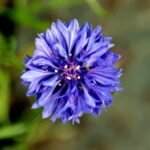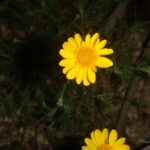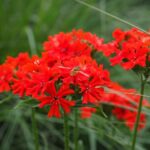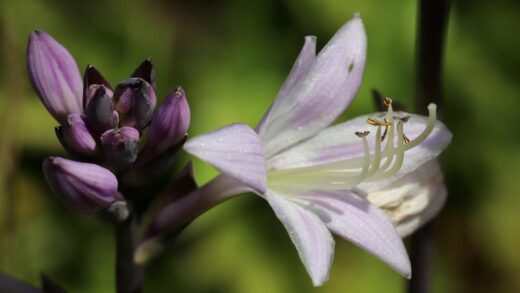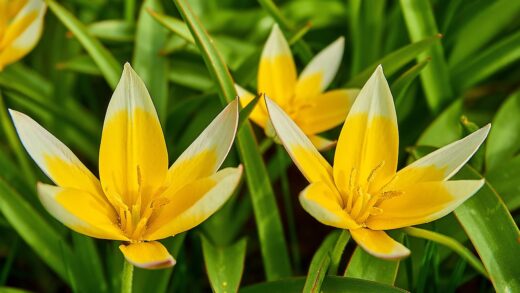Light requirements of the Hosta

Understanding the specific light requirements of Hostas is fundamental to unlocking their full ornamental potential. While they are universally celebrated as the quintessential plants for shady gardens, the term “shade” itself encompasses a wide spectrum of light conditions. The ideal amount of light for a Hosta is not a one-size-fits-all prescription; it varies dramatically depending on the specific cultivar, its leaf coloration, and even the regional climate. Providing the right balance of light is the key to achieving the most vibrant foliage colors, maintaining healthy growth, and preventing common issues like leaf scorch. This guide will explore the nuances of Hosta light requirements, helping you to select the perfect location for your plants to thrive and display their best characteristics.
The vast majority of Hosta varieties perform best in a location that receives filtered or dappled sunlight, which closely mimics the light conditions found on a woodland floor. This type of light, often found under the canopy of high-branched deciduous trees, provides brightness without the intensity of direct sun. Another ideal location is one that receives gentle morning sun for a few hours, followed by full shade during the hottest and most intense part of the afternoon. This combination allows the plant to photosynthesize efficiently in the morning while protecting its delicate leaves from the damaging effects of the strong afternoon rays, which can lead to faded colors and scorched leaf margins.
The coloration of a Hosta’s leaves is one of the most reliable indicators of its specific light tolerance. Hostas with deep blue or blue-green foliage, such as the popular ‘Halcyon’ or ‘Blue Angel’ varieties, require the most shade. The blue color is actually a waxy coating, called bloom, on the surface of the green leaf. Intense sunlight and high temperatures can cause this waxy coating to melt away, revealing the green leaf underneath and diminishing the plant’s unique beauty. To preserve the richest blue coloration, these varieties must be sited in full or at least deep, consistent shade for the majority of the day.
On the other end of the spectrum are the yellow, gold, and chartreuse-leaved Hostas, like ‘Sum and Substance’ or ‘August Moon’. These varieties generally need more light to develop their brightest and most brilliant colors. When planted in deep shade, their foliage may take on a duller, more lime-green appearance. A location that receives several hours of morning sun is often perfect for these cultivars, as the light intensifies their yellow and gold pigments. However, they still require protection from the harsh afternoon sun, which can easily scorch even these more sun-tolerant types.
Variegated Hostas, those with patterns of cream, white, or yellow on their leaves, have more complex light needs. The green portions of the leaf contain chlorophyll and perform photosynthesis, while the lighter portions lack chlorophyll. To support the non-photosynthesizing parts of the leaf, the green sections must receive adequate light. Therefore, variegated Hostas generally benefit from some direct morning sun to keep them vigorous and to make their contrasting patterns stand out. As with all Hostas, afternoon shade is crucial, especially for varieties with large areas of white in their leaves, as the white tissue is particularly susceptible to burning.
More articles on this topic
Decoding shade levels
To successfully site your Hostas, it is important to understand the different levels of shade that can exist in a garden. “Full shade” is a term that can be misleading, as very few plants can survive in the complete absence of light. In a garden context, full shade typically refers to an area that receives less than three hours of direct sunlight per day, with the majority of its illumination coming from indirect or reflected light. This is the type of environment often found on the north side of a building or under dense evergreen trees. While some Hostas will survive in full shade, many will exhibit slower growth and less vibrant coloration. Blue-leaved Hostas are the best candidates for these deeply shaded locations.
“Partial shade” or “semi-shade” is the ideal condition for the widest range of Hosta varieties. This level of shade is generally defined as an area that receives between three and six hours of direct sun per day. Critically, for Hostas, this sun exposure should occur during the cooler morning hours. An east-facing garden bed, which is illuminated by the sun from sunrise until midday and then is shaded for the rest of the day, provides a perfect partial shade environment. This allows the plants to receive enough light for robust growth and color development without the stress and risk of scorch associated with afternoon sun.
“Dappled shade” is another highly desirable condition for Hostas and is often considered a type of partial shade. This is the shifting, filtered light that occurs beneath the canopy of deciduous trees, where the leaves of the trees create a constantly moving pattern of sun and shade on the ground below. This environment provides protection from intense, prolonged sun exposure while still allowing bright, filtered light to reach the plants throughout the day. Dappled shade is excellent for most Hosta varieties, including green, variegated, and some of the more sun-tolerant golden types. It closely replicates their natural woodland habitat and promotes healthy, lush growth.
It is also important to consider the “intensity” of the sun, which varies based on your geographical location. The afternoon sun in a northern climate is far less intense than the afternoon sun in a southern region. This means that a Hosta variety that might tolerate some afternoon sun in a cooler, more northern area could quickly scorch in the same exposure in a hotter, southern climate. Therefore, you must always factor in your specific climate when interpreting light recommendations. Observing how the light falls in your own garden throughout the day and throughout the seasons is the most reliable way to identify the perfect microclimate for each of your Hosta plants.
More articles on this topic
Signs of incorrect lighting
Hostas are very expressive plants and will often provide clear visual cues if they are receiving either too much or too little light. One of the most common signs of excessive sun exposure is leaf scorch. This can manifest in several ways, including brown, crispy edges on the leaves, yellowing or browning between the veins, or large, dried-out patches that look bleached. The variegation on some cultivars may also appear to “melt out,” with the lighter centers or margins turning a mushy brown. These symptoms are a direct result of the leaf tissue being damaged by the heat and intensity of the sun.
Another indication of too much light is a general fading or “washing out” of the foliage color. This is particularly noticeable in blue-leaved varieties, which will lose their waxy blue coating and turn a plain green or a sickly greenish-yellow color in excessive sun. Fragrant-flowered Hostas, which are generally more sun-tolerant, may develop a yellowish cast to their leaves if the sun is too intense, indicating they are under stress. While some yellowing is desired in gold-toned varieties, a bleached-out, pale look is a sign that the plant has surpassed its tolerance level and needs more protection.
Conversely, a Hosta that is receiving too little light will also show distinct symptoms. The most obvious sign is often etiolation, where the leaf petioles (stems) become unusually long and stretched as the plant reaches for a light source. This can result in a sparse, leggy appearance, detracting from the dense, mounding habit that is so desirable in Hostas. The plant may also produce fewer leaves than normal, and the overall size of the clump may fail to increase or even decline from year to year.
Inadequate light also has a significant impact on foliage color and variegation. In deep shade, yellow and gold varieties may never achieve their bright, vibrant potential, instead remaining a less interesting shade of lime-green. The crisp, contrasting patterns on variegated cultivars may become muted and indistinct, with the white or cream areas shrinking or appearing muddy. While blue-leaved varieties thrive in shade, even they need some bright, indirect light to look their best. In very dark conditions, the overall growth will be weak, and the plant will be more susceptible to pests and diseases due to its lack of vigor.








